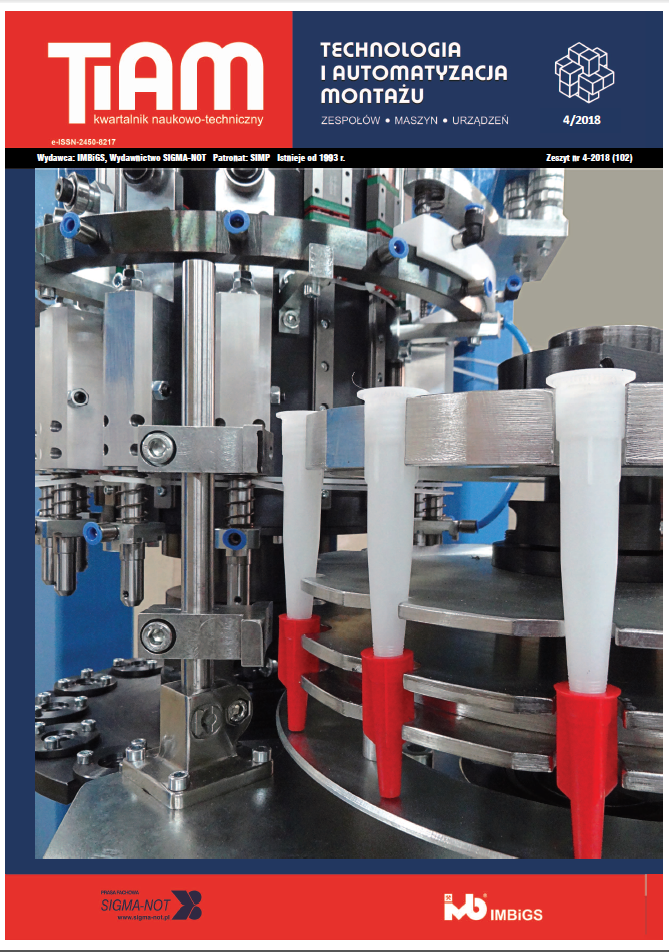Abstract
The paper presents two ways of assembly of liquid radiator tank gaskets. A comparison of the test results of liquid coolers with a manual and poured gasket on a modular robotic assembly station is presented. Gaskets made of EPDM (ethylene propylene diene monomer) and two-component silicone rubber were used, verifying their hardness, chemical composition, detachment strength and resistance to aging. After the clinch joints were made, they were tested for their burst strength and micrography taking into account the deflection values of both gaskets. The summary presents the advantages and disadvantages of sealing in relation to the durability of liquid coolers, the duration of assembly operations, including directions for further tests.
This is an Open Access article distributed under the terms of the Creative Commons Attribution License CC BY 4.0 (https://creativecommons.org/licenses/by/4.0/)
References
Balawender T. 2010. "Klinczowanie jako sposób łączenia cienkościennych blach". Technologia i Automatyzacja Montażu (1): 33-36.
Gronostajski Z., S. Polak. 2009. "The application of clinching techniques to join impact energy absorbing thin-walled aluminium sections". Archives of Metallurgy and MateriaIs vol. 54(3): 695-70.
Koch T. 2006. "Systemy zrobotyzowanego montażu". Oficyna Wydawnicza Politechniki Wrocławskiej.
Lambiase F. et. al. 2015. "Joining aluminium alloys with reduced ductility by mechanical clinching". Inter-national Journal of Advanced Manufacturing Technology vol. 77(5-8):1295-130.
Lee Ch.-J. et. al. 2010. "Parametric study on mechanical clinching process for joining aluminum alloy and high strength steel sheets". Journal of Mechanical Science and Technology, vol. 24, No. 1: 123-126.
Meschut G., V. Janzen, T. Olfermann . 2014. "Innovative and highly productive joining technologies for multi-material lightweight car body structures". Journal of MateriaIs Engineering and Performance, vol. 23(5): 1515-15.
Mucha J. 2017. "Clinching technology in the automo-tive industry". The archives of Automotive Engineering -Archiwum motoryzacji, vol. 76(2): 75-94.
Mucha J., L. Kaśćak, 2010. "Wybrane aspekty kształtowania okrągłych połączeń przetłoczeniowych". Problemy eksploatacji - Maintenance problems (4): 29-38.
Nong N. et. al. 2003. "Research on press joining technology for automotive metallic sheets". Journal of MateriaIs Processing Technology no. 137(1-3): 159-163.
Trespaderne F.M., E. López. 2009. "Visually guided robot for radiator sealing". Emerging Technologies & Factory Automation, 22-25 Sept. 2009 Mallorca-Spain, IEEE Conference.
Yang Z. et. al. "Research on Intelligent Glue-coating Robot Based on Visual Servo". Physics Procedia, vol. 24: 2165-2171.
Żurek J., K. Peta. 2014. "Ocena wytrzymałości połączeń nierozłącznych w skraplaczach samochodowych za pomocą analizy sygnałów wibroakustycznych". Inżynieria Maszyn t. 19(1): 115-124.

